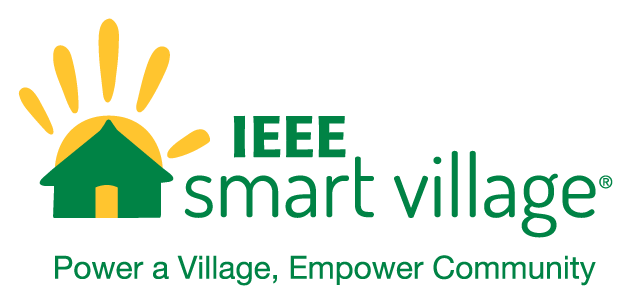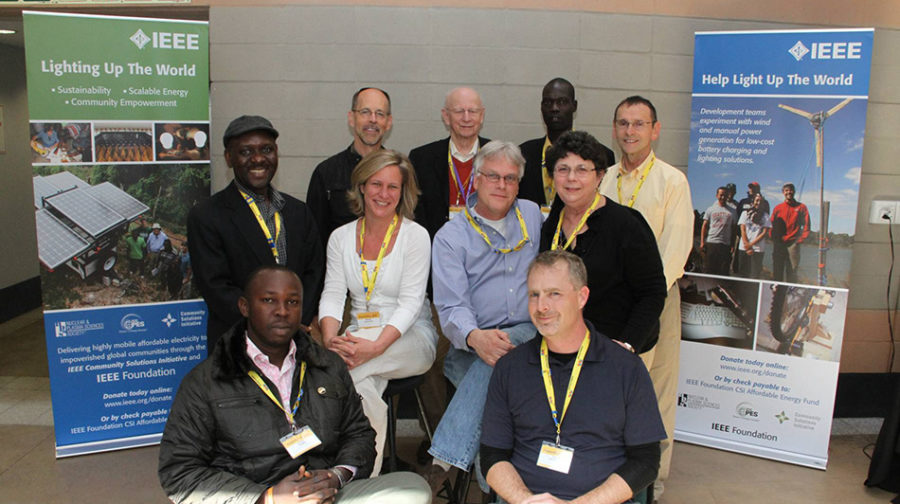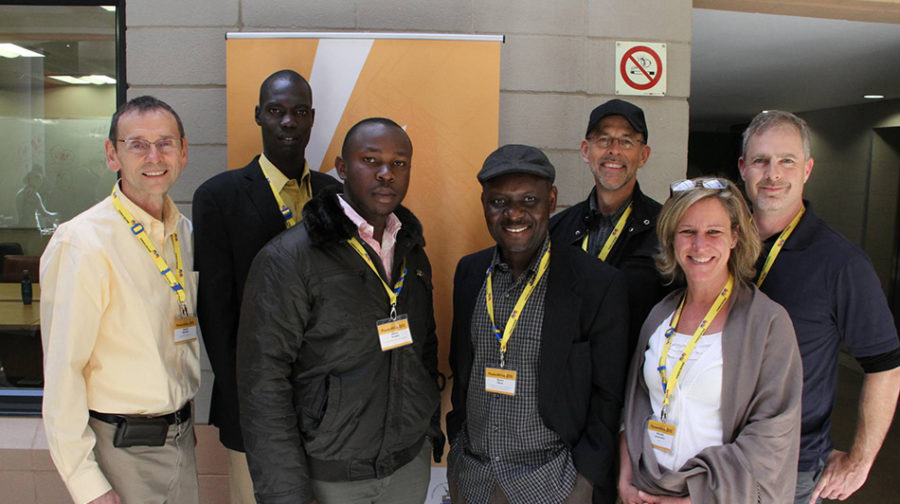Testimonial from Mou Riiny in South Sudan
My exodus from South Sudan as a boy amid war and my chance to return as a man to help my countrymen has been a journey of a lifetime, and I am still a young man.
The IEEE Smart Village Initiative – meaning, the people who make it the positive force that it is – has played a significant role in my ability to bring a change to my former village of Thiou in South Sudan. I’d like to tell that part of my story.
Sudan was torn apart by civil war in the 1970s and again in the 1980s. In the latter conflict, tens of thousands of boys, including me, fled the war and possible conscription as combatants. We walked hundreds of miles over months to reach crowded refugee camps in neighboring Kenya. Half of my compatriots died along the way. The survivors remained there for years. In 2000, the U.S. State Department relocated perhaps 4,000 of us to the U.S. and I grew up in foster families in Massachusetts.
Guided by a teacher, I studied math and engineering, eventually becoming a student at the University of San Diego (USD), where I graduated with an electrical engineering degree in 2011 – the same year that South Sudan became recognized as its own country.
By then I’d met Ron Moulton, director of a group known as Village Help for South Sudan, and learned of something called the Thiou Village Project. As part of a senior project at USD, I traveled with several American classmates to Thiou to install solar panels, inverters and provide battery packs that could recharge portable batteries to power lights, radios, laptops and other portable electronic devices. My old school was the first project. People actually walked for miles to see me to turn on the first lights ever seen in Thiou!
This work led me to attend several international conferences, where I met other people working on similar goals. In 2011 I attended the first IEEE Global Humanitarian Technology Conference (GHTC) in Seattle. In 2012, at the Power Africa conference in Johannesburg, I met many people affiliated with the IEEE Community Solutions Initiative (CSI), including Ray Larsen, Mike Wilson, Martin Niboh and Patrick Lee, and they introduced me to the CSI’s entrepreneur-based business model. I returned to Seattle for the second IEEE GHTC, where I met Robin Podmore, who also expressed interest in my background and the work we were doing in Thiou.
Having completed the initial work in Thiou with support from the Village Help for South Sudan Project, I presented a paper, “South Sudan Rural Electrification Project,” at IEEE’s 2013 Global Humanitarian Technology Conference (GHTC) in San Jose, Calif. The entire group of CSI volunteers encouraged me to adopt its entrepreneur-based business model. (As you may know, the CSI morphed into IEEE Smart Village Initiative.) This led to further work for me in South Sudan, but as an entrepreneur.
Under that model, I formed a company called SunGate and we are now working in three states in South Sudan, one of which includes my original home in Thiou. We are building solar charging stations and distributing battery packs to those who need them. At this point, we have provided nearly 1,000 battery packs to homes with maybe six people each, so we’ve affected change for nearly 10,000 people. At first, of course, many people did not even realize what electricity is or can do. In Juba, the capital of South Sudan, only a fraction of the people has electricity for a few hours each day. Outside the city limits there is no grid. So it takes time for villagers to grasp the benefits, but as many are getting radios and cell phones, they get it.
Now we are introducing these innovative systems, and their excitement is overwhelming. They have a saying there that “we should bring the town to the people, not the people to the town,” so bringing electricity to them with a solar home kit, for instance, makes their home into a town. Many villagers want to rent a portable battery for their home so their children can read at night, but others are taking them to more remote villages to charge $1 for cell phone charging and they can make perhaps $150 per month, as long as they return to us to charge the batteries.
When I was growing up in Thiou, very few of us went to school. Today, most children go to school. So at night, the mother has light to cook by, the father and the children can read, and it has a bit of status to it – having a lit home. Education will be improved this way, and side businesses are made possible.
In the future, well, these people already know about refrigerators and televisions and they’ve asked whether we can power them. And I say “Well, it’s coming down the line. No problem. Let’s get this working, and we’ll bring the next-generation renewable-energy technology.” So they’re already asking. But we have a bottleneck. The solar technology we need is not available in South Sudan. The traditional means has been diesel-powered generators, which are noisy, dirty, expensive and they break down.
Solar-based electricity is a great solution. Kerosene makes poor light and it’s dirty. I’m confident we can scale up what we’re doing to help reach the IEEE Smart Village goal of 50 million people in 10 years. Personally, I can say “thank you.” All this would not have been possible if Robin had not contacted me and pulled me into the Smart Village project. I have been able to find other opportunities elsewhere because IEEE introduced me to the innovative business model and system design for bringing electricity to energy-poor people. We took it and we ran with it, and so I give thanks to IEEE.



